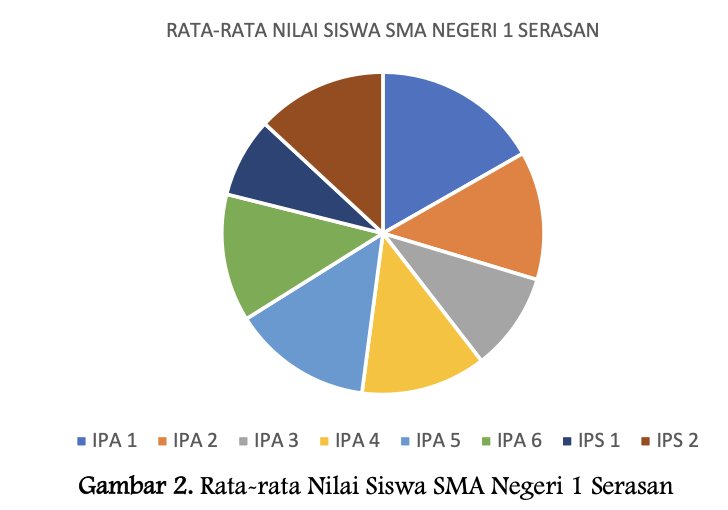Profil Wawasan Kelautan Siswa di SMA Negeri 1 Serasan
Main Article Content
Abstract
The purpose of this study was to find out the Ocean Insight Profile in biology students at SMAN 1 Serasan. This research use a qualitative approach with a descriptive method. The sample in this study were all students from class X to class XII (IPA and IPS) at SMAN 1 Serasan. The research instrument used was the marine insight test which totaled 51 questions. The results showed that the average value of archipelago insight for science students was 77.74 (high) and the average score for social science students was 59.86 (low). It can be concluded that the archipelago insight of science students is better than the archipelago insight of social studies students.
Article Details

This work is licensed under a Creative Commons Attribution-ShareAlike 4.0 International License.
References
Ali, M.(2013). Penelitian Kependidikan Prosedur & Strategi. Bandung: Angkasa.
Cava, F., Schoedinger, s., Strang, C., & Thuddenham, P. (2005). Science content and standards for ocean literacy: A report on ocean literacy. Retrieved March, 25, 2015.
Chairil,N,Siregar.(2010).Peran Sosial,Ekonomi,Dan Budaya Masyarakat Dalam Meningkatkan Keamanan Di Kabupaten Natuna Provinsi Kepulauan Riau. Jurnal Sosiotekno Edisi 21.
Effendy,M.(2018). Pengenbangan Instrumen Penilain Literasi Kelautan untuk Siswa SMA. Jurnal Kiprah. Vol 1. No 2.
Greely, T.(2008). Ocean literacy and reasoning about ocean issues: The influence of content, experience and morality (Doctoral Dissertation, University of South Florida)
Guest,H.,Lotze,H.K. dan D.Wallace.(2015) Youth and the sea: Ocean Literacy in Nova Scotia, Canada Marine Polisy 58:98-107.
Irwan,B.(2018) Framework Literasi Kelautan Sebagai Acuan Pembelajaran Sains di Negara Maritim. Jurnal Pedagogi Hayati. Vol.2 No.(1).ISSN:2503-0752.e-ISSN:2579-4132.
Lasabuda,R.(2013). Pembangunan Wilayah Pesisir dan Lautan dalam Perspektif Negara Kepulauan Republik Indonesia.Jurnal Ilmiah Platax.I (2),92-101.
Manapa,E.S.(2010).Propil Dunia Kelautan Dalam Perspektif Siswa Indonesia Di Tingkat Sekolah Dasar(Studi kasus : Siswa kelas 4,5 dan 6).Jurnal Penelitian Pendidikan.11(1), 49-54.
Matsumoto,K.,Takeno,K.,Urata,M.,Matsubara,M.,Kato,T.,Suzuki,N.,and Hayakawa,K.(2017).Evaluation of Marine Education’s Effect in Elementary and Junio high schools-Analysis of the Value Consciousness Using Text Mining. American Journal of Educational Research. 2017,5(1):76-81.
Nazir,Moh.(2005). Metode Penelitian. Jakarta: Ghalia Indonesi.
Nur Eka,K,H.(2018). Reorientasi Pembelajaran Sains Berbasis Litersi Kelautan. Jurnal Pendidikan Biologi. Vol 11. No (2). Hal (78-84). p-ISSN:1693-265X.e-ISSN:2549-0605.
Rezky,Eko.C.(2019). Peran LPDB dan KUMKM Natuna Menjadi Poros Maritim IND. Jurnal BPPK.Vol.12. No 1. Hal 01- 19.
Riduwan,(2010). Skala Pengukuran Variabel-Variabel Penelitian. Bandunsug: Alfabeta.
Sugiyono.(2005). Memahami Penelitian Kualitatif.CV.Penerbit Alfabet Bdg. Sugiyono.(2012). Memahami Penelitian Kualitatif. Bandung: ALFABETA.
Hindrasti, N. E. K. (2018). Reorientasi pembelajaran sains berbasis literasi kelautan reorientation of ocean literacy-
based science learning. BIOEDUKASI: Jurnal Pendidikan Biologi, 11(2), 79-84.
Strang, C., DeCharon, A., & Schoedinger, S. (2007). Can you be science literate without being ocean literate. Current:
The Journal of Marine Education, 23(1), 7-9.
Yeung, R. W., Liao, S. W., & Roddier, D. (1998, May). On roll hydrodynamics of rectangular cylinders. In ISOPE
International Ocean and Polar Engineering Conference (pp. ISOPE-I). ISOPE.

